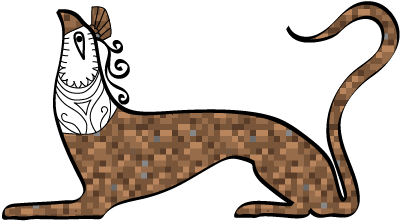ESHE 2023
On 21-23 September 2023 the 13th Annual Meeting of the European Society for the study of Human Evolution (ESHE 2023) was held in Aarhus, Denmark. Further information is available at https://www.eshe.eu/meetings/. Papers of interest to Nestor readers included:
D. De Caro, M. Kuhn, E. Panagopoulou, K. Harvati, and V. Tourloukis, “The technological behaviour in the Lower Palaeolithic site of Marathousa 1 (Megalopolis basin, Greece)”
Cretan Hieroglyphic and Linear A
On 23 September 2023 a workshop entitled New Prospects on the Aegean Undeciphered Scripts: Cretan Hieroglyphic and Linear A was held at the Heraklion Archaeological Museum in collaboration with the ERC research project “INSCRIBE – Invention of Scripts and their Beginnings” of the University of Bologna. Further information is available at https://www.heraklionmuseum.gr/anakoinosi-16-3-2023-duplicate-9858-duplicate-11172-19/. The program was:
S. Ferrara, “Introduction”
A. Kanta, “Recent finds from the cult centre of the city of Knossos”
A. Santamaria, “Shaping, reading and stamping a hieroglyphic seal: The interweaving of material, epigraphic and contextual features”
M. Civitillo, “Seals for counting? A new proposal for the ‘meaning’ and use of recently identified Cretan Hieroglyphic Script signs on seals”
A. Greco, “The Minoan scribes treated as criminals! First results of an integrated palaeographic survey of the corpus of Linear A tablets from Phaistos”
J. Weingarten, “A new look at the first ever published Cretan Hieroglyphic 4-sided prism, 150 years later”
G. Flouda, “Closing remarks: From iconicity to the future of Minoan writing”
Brightening the Dark Ages
On 27-30 September 2023 an international conference entitled Brightening the Dark Ages, Archaic Greek Culture and Its Past was at the Academy of Athens. Further information is available at http://www.academyofathens.gr/en/conferences/brighteningthedarkages. The program was:
A. Vlachopoulos, X. Charalambidou, and V. Lambrinoudakis, “The settlement of Grotta, Naxos: from the ‘proto-urban town’ to the historical ‘polis’”
Y. Lolos and C. Marabea, “Kanakia and Ginani: the end of the Mycenaean Palatial Age and the transition to the Early Iron Age in Southern Salamis”
H. Goette, “The sanctuary of Zeus Hellanios on Aigina: Mycenaean connections into historical times?”
C. Brillante, “Homeric poetry and local traditions: the Pylian epos between Mycenaean and archaic age”
A. C. Cassio, “Ἀλλόκοτα γράμματα: notes on the dialectal and graphemic fragmentation of archaic Greece”
M. Finkelberg, “From Iolkos to Troy: Thessaly and Thessalians in Greek heroic tradition”
K. Kalogeropoulos, “Aristocratic and democratic perceptions of the Mycenaean past in Attica during the 8th and the 7th centuries BCE”
J. Burgess, “Achilles and the development of Trojan war myth”
A. Lardinois, “Homer’s Pindar: the epic possession of a lyric past”
R. Seaford, “From aggregation to antithesis: vase-painting, text, and cosmology in the developing ‘polis’”
I. Rutherford, “Greek religious networks from Mycenaean period to archaic Greece”
E. Cingano, “Epic verse and performance before Homer: the spoken word and the fixed text”
G. Nagy, “Comparative approaches to Greek myths about invasions during the ‘Dark Ages’: on the so-called Dorian Invasion”
E. Cline, “Coping, adapting, and transforming in the aftermath of the LBA collapse: the view from the Aegean to Assyria during the Iron Age”
J. Whitley, “Alternative pasts: Crete and Thessaly compared”
S. Sherratt, “Euboean sub-protogeometric plates in the 9th century BCE, East and West”
E. Wagner-Durand, “‘Fantastic Beasts’ … between East and West: the transfer of emotive images using the example of composite and other special beings”
P. W. Stockhammer and The Attica Archaeogenetic Project, “A bioarchaeological light on the ‘Dark Ages’”
I. Hajnal, “The Greek dialects in the early phase of the Dark Ages”
A. Duplouy, “A link to the past? The ancestors cult reconsidered”
A. Willi, “Before the dithyramb”
R. Janko, “Archaeological versus linguistic interpretations of the Greek Dark Age: the power of wishful thinking”
R. Osborne, “What sort of a political world should we posit for the 8th century BCE?”
La religion micénica
On 28-29 September 2023 a symposium entitled La religion micénica: conceptos, prácticas, objetos was held in Segovia. Further information is available at https://extension.uned.es/actividad/32911&codigo=. The program was:
C. Varias García, “La religión de Micenas en las fuentes textuales y arqueológicas”
A. Bernabé, “En torno a ki-ri-te-wi-ja”
J. M. Jiménez Delgado, “La sacerdotisa Erita, los ko-to-no-o-ko y las parcelas ke-ke-me-na de pa-ki-ja-ne: personal religioso y tenencia de tierras en Pilo”
H. Whittaker, “From Bronze to Iron; the Demise of Mycenaean Religion”
E. R. Luján, J. Piquero, and I. Serrano, “De animales y máscaras: sobre los zoónimos micénicos”
J. Weilhartner, “Mycenaean kings and the divine sphere: some thoughts on a ‘complicated relationship’”
S. Lupack, “Reconsidering Religion in the Throne Room: Religious Authority in Mycenaean Society”
F. Díez Platas, “Sillas, vasos y gestos: sobre la iconografía de la celebración cultual del vino en la imaginería micénica”
F. Blakolmer, “Why are we unable to identify the deities of the Linear B texts in Mycenaean iconography?”
M. Perna, “Religione e scrittura nella società minoica e micenea”
C. Varias García, A. Bernabé, J. Weilhartner, F. Blakolmer, and H. Whittaker, “Progress and Perspectives in the study of Mycenaean Religion”

